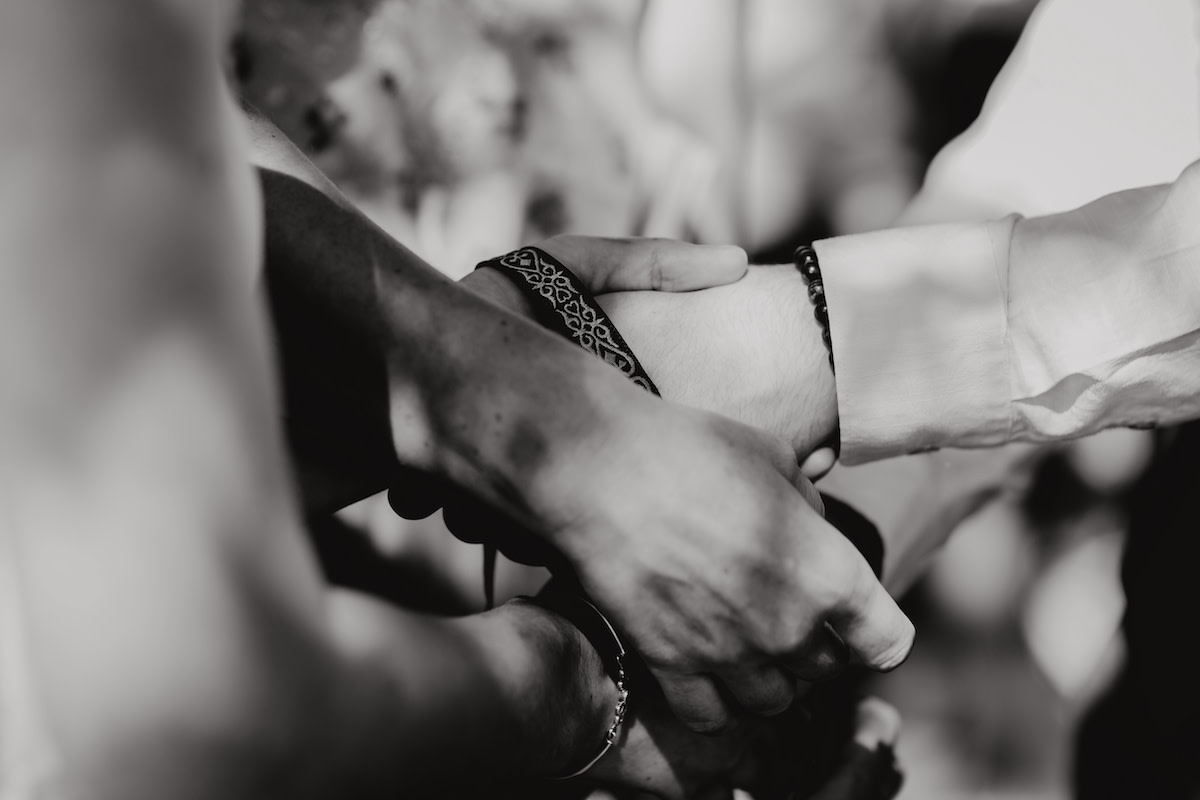Handfasting Ceremony: What Is Handfasting?
Written by MasterClass
Last updated: Dec 14, 2022 • 2 min read
Historians believe the term “tying the knot” originated in the Irish tradition of the handfasting ceremony. Read on to learn more about the ritual.
Learn From the Best
What Is a Handfasting Ceremony?
A handfasting ceremony is a unity ritual based on ancient Celtic tradition in which an officiant ties a couple’s hands together with a handfasting ribbon to symbolize their commitment. Wiccan and Pagan faiths often include Celtic handfasting as a part of wedding vows, but in recent years, couples have adopted the practice as part of other types of weddings. A handfasting unity ceremony may occur during a marriage ceremony, an engagement, or a vow renewal.
Brief History of Handfasting Ceremonies
The tradition of handfasting dates back to ancient Ireland and Scotland, where engaged couples observed their betrothal by tying a braided ribbon around their joined hands in the presence of a priest. This act represented a trial marriage, which lasted a year before the couple’s official wedding day, and was less expensive than a ring exchange. If the couple decided they were not a good match during that time, they would tell their priest and officially dissolve the relationship.
What Is a Handfasting Cord?
A handfasting cord or ribbon ties a couple’s hands together during the handfasting ritual. The cord may be a long piece of fabric or three pieces braided together with flowers, keepsakes, or charms woven throughout or tied to the ends. The material used should be long enough to wrap around your hands several times. It may be sentimental to you and your partner, such as heirlooms from family members or other fabrics with symbolic meaning.
Who Performs the Handfasting Ceremony?
Typically, the wedding officiant performs the handfasting ceremony, but anyone may do so, including family members, close friends, or any other loved one. You may also choose multiple wedding celebrants to perform the ritual.
How to Have a Handfasting Ceremony
You may choose to do any or all of the following steps for a handfasting ceremony:
- 1. Explain the ritual. An explanation helps observers watching your ceremony understand the symbolism and meaning of the handfasting tradition. Include a brief description and history of the practice in the ceremony script. You may want to include personal details that mean something to you as a couple, such as the desire to join together as one.
- 2. Join hands. Your officiant then instructs you to join hands. You may join hands side by side, by crossing them one over the other or taking your partner’s right hand in your right hand (or you can choose to join left hands). Choose the most comfortable position for both of you.
- 3. Reading of the vows. Your officiant reads the wedding vows (or custom vows) while wrapping the handfasting ribbon or cord around your joined hands. Some participants choose a simple hand encircling, while others prefer a more complicated infinity knot. You may also choose to have a loved one wrap the cord while your officiant continues reading.
- 4. Complete the ritual. Your officiant announces the completion of the handfasting ritual. At this point, you may keep your joined hands bound or remove the ribbon to exchange additional vows or participate in the ring exchange.
- 5. Keep your handfasting ribbon. Many couples save their handfasting cords as a keepsake. You may choose to use it again years down the line to renew your vows.
Ring the Wedding Bells
Have a wedding to plan? Learn how to take on the process strategically. Discover Mindy Weiss’s approach to setting a budget, choosing a theme, and sending invitations when you sign up for the MasterClass Annual Membership.
